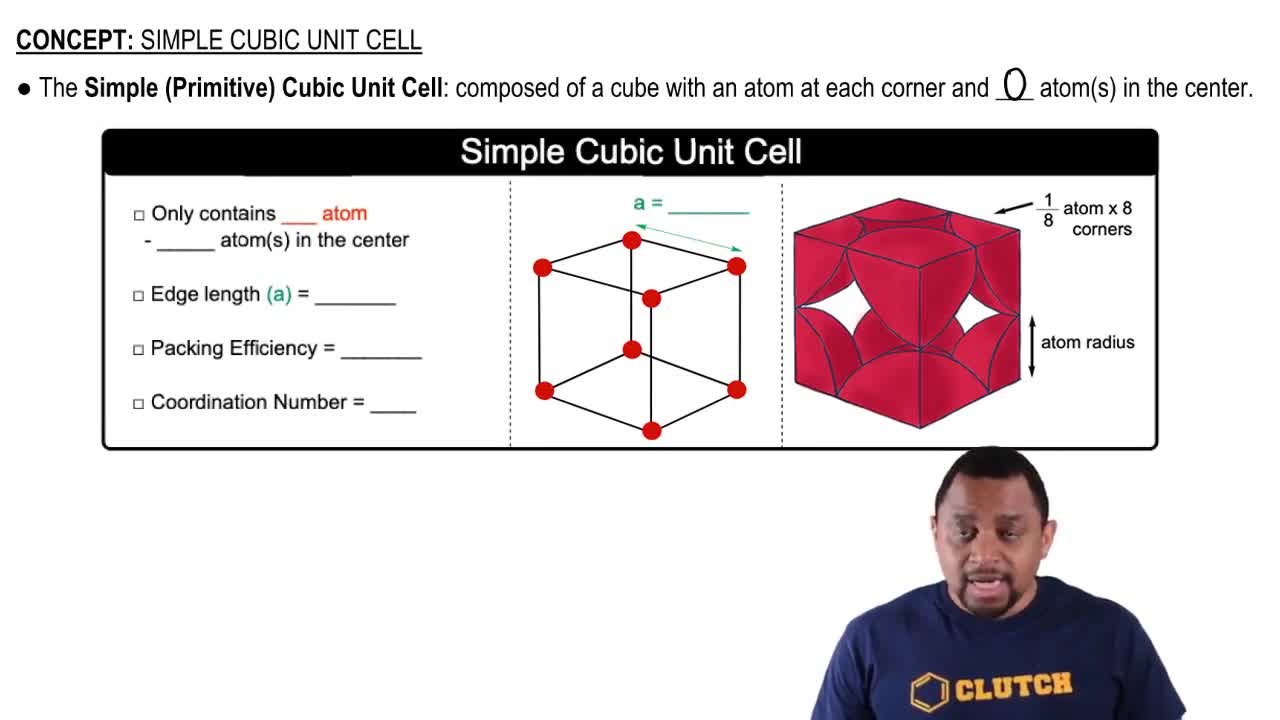Here are the essential concepts you must grasp in order to answer the question correctly.
Molar Mass and Composition
To determine the number of atoms in the unit cell, one must first calculate the molar mass of each element present in the mineral. The percentages by mass of aluminum (Al), magnesium (Mg), and oxygen (O) can be used to find the empirical formula, which indicates the ratio of atoms in the compound. This is essential for converting mass percentages into moles, which will ultimately help in finding the number of atoms in the unit cell.
Recommended video:
Unit Cell and Atomic Arrangement
The unit cell is the smallest repeating unit in a crystal lattice that reflects the symmetry and structure of the entire crystal. In a cubic unit cell, the arrangement of atoms can vary, affecting how many of each type of atom are present. Understanding the geometry and the edge length of the unit cell is crucial for calculating the total number of atoms based on the volume and density of the mineral.
Recommended video:
Density and Volume Calculations
Density is defined as mass per unit volume and is a key factor in determining the number of atoms in a unit cell. By using the given density of spinel and the calculated volume from the edge length of the cubic unit cell, one can find the total mass of the unit cell. This mass can then be related back to the number of moles and subsequently the number of atoms of each element present in the unit cell.
Recommended video:




